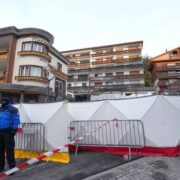In praise of Philippine chocolates

Cacao (Theobroma cacao) is not native to the Philippines, having been first domesticated over 5,000 years ago in tropical South America and brought to our country, much later, through the Colombian exchange. But as in West Africa and other parts of Asia, it has taken root in our archipelago. Chocolates have been having a resurgence in the country, with local producers creating premium chocolates that have gained notice on the world stage while also making inroads in the local economy.
My introduction to local cacao happened very early in my childhood: there was a cacao tree near our apartment and its fruit was among those we, the neighborhood kids, would forage as we roamed about the forests of Mount Makiling. I remember little else, except for marveling at how such a fruit—white like mangosteen—can be transformed into what we know as chocolate.
As for chocolate itself, just like many ’90s Filipino kids, we had ChocNut, as well as Curly Tops and Flat Tops. My siblings and I would also look forward to the occasional pasalubong that our scientist-father would bring home from his international conferences—my favorite being the giant bar of white Toblerone. The eventual realization that most chocolates possessed way too many calories did not deter me from eating them, especially during or after a hike.
But it was my discovery of dark chocolate (the higher the percentage, the better) that gave me a stronger reason—or excuse—to continue eating chocolates. With its health benefits and complex flavors, what’s the harm in one square inch—or three?
Just like coffee (see last week’s column, “Cultivating Philippine coffee,” 8/30/24), it was in Latin America where I got introduced to artisanal chocolates. Local chocolaterías and brands like the well-established República del Cacao, Peru’s Cacaosuyo, Ecuador’s Pacari, and Mexico’s Feliu made me realize that while we associate chocolates with European countries like Switzerland or Belgium, the actual raw ingredient actually comes from countries belonging to the so-called “Global South”—and they deserve to reap more of the benefits of the industry that’s estimated to be worth $120 billion.
Fortunately, there have been efforts to boost chocolate manufacturing in cacao-producing nations, accompanied by a surging interest in bean-to-bar (or tree-to-bar) offerings that are adding value to both local cacao and chocolate—including in the Philippines. On top of our tablea (as the food writer Ige Ramos reminds us, we have hundreds of cacao varieties that have given rise to hyperlocal tablea traditions), a growing number of companies have been offering single origin or artisanal chocolates. Surely, there are many others and I eagerly look forward to trying them.
So far, the notable source areas include the “cacao capital” Davao (e.g., Malagos with their classic 65 percent and 72 percent blend; Theo & Philo and their funky flavors; Hiraya; Auro Chocolate with distinctive single origins like Saloy, Luna, and Paquibato); South Cotabato (e.g., Risa Chocolates; Kablon Farms, Tigre y Olivia’s excellent 80 percent Tupi); Cotabato (e.g., Godel); Bohol (e.g., Dalareich’s Ginto Chocolates); Bicol (e.g., Mayon Gold, Alea), Batangas (e.g., 1919 Chocolate); Rizal (e.g., Krone’s Antipolo 70 percent), and even Isabela (e.g., Ben’s Blend, with their incredible 75 percent and 85 percent).
The world of chocolate is taking notice. For almost a decade, thanks in part to the efforts of the above companies and exponents like Estela Duque, local chocolates have been winning awards; chocolatiers and critics alike have been singing the wonders of Philippine chocolate.
The Guardian columnist Annalisa Barbieri, for instance, recently gushed over a Mindanao chocolate by Firetree, writing that “[t]he depth of joy this bar brought is hard to translate into words.” Admittedly (and understandably so, given their small batches), these chocolates can be relatively expensive—a bar can cost anywhere from P180 to P300.
And as the social scientist Karl Cheng Chua, who has done research on the subject, told me, Filipinos’ preference for sweetness means that mass-produced milk chocolates will still dominate the market, so making people recognize the worth of these bars remains a challenge, alongside safeguarding the products, stimulating research, and supporting promotion efforts.
Ruben Simon Jr. of Ben’s Blend shares that partly due to climate change, the global cacao supply shortage is also a major concern among chocolate companies. Data and monitoring systems—as well as integrated agri-value chains—are imperative if we are to stay on track with the Philippine Cacao Industry Roadmap (2021-2025).
Such challenges notwithstanding, the cacao and chocolate industries continue to hold the potential to provide environmentally sustainable (including agroforestry-based) livelihoods to rural communities, while enriching our tourism, expanding our palates, and reminding us that we have so much wealth as a nation, from our rich volcanic soil to our creative farmers and entrepreneurs.
As the cultural historian Fernando Zialcita writes: “Hitherto ignored, our cacao has a story to tell that is distinct from the better-known cacao coming from its neighbors.”
—————-
glasco@inquirer.com.ph
Gideon Lasco, physician, medical anthropologist, and columnist, writes about health, medicine, culture, society, and in the Philippines.


















